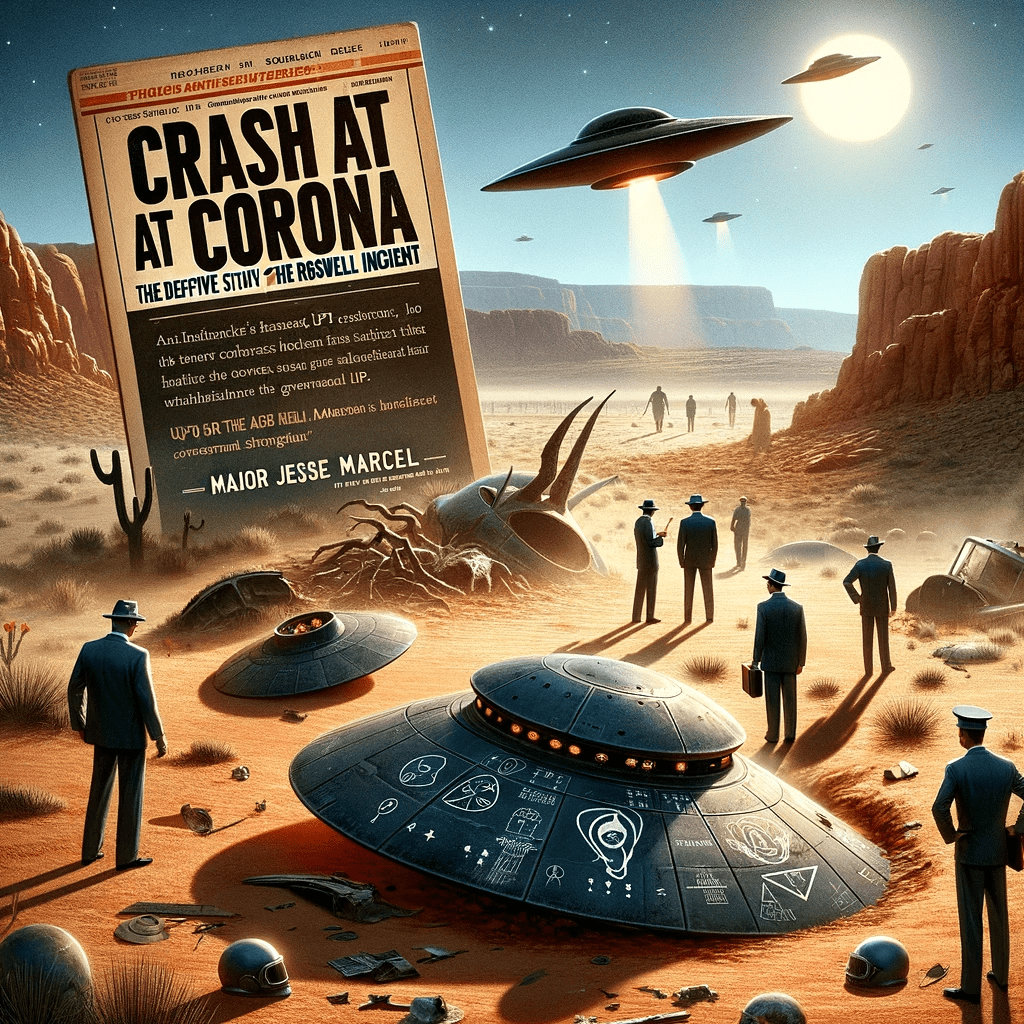Crash at Corona: The Definitive Study of the Roswell Incident

Crash at Corona: The Definitive Study of the Roswell Incident by Stanton Friedman and Don Berliner focuses on the 1947 Roswell UFO incident, presenting what the authors describe as the most comprehensive investigation into this controversial event. The book is dedicated to exploring the evidence surrounding the alleged crash of a flying saucer near Corona, New Mexico, and addressing government involvement in the subsequent cover-up. At the heart of their investigation is Major Jesse Marcel, a key witness and intelligence officer from the Roswell Army Air Field, who collected debris from the crash site. Marcel’s testimony, central to the narrative, supports the claim that the material recovered was not from a weather balloon, as officially stated, but was an unknown type of metal with strange properties, including the ability to return to its original shape after being crumpled. The authors emphasize that Marcel’s statements point to the discovery of something extraordinary, suggesting it was extraterrestrial in nature.
The book also looks into the testimonies of other witnesses who claim to have seen debris or even alien bodies at the crash site, contributing to the argument that more than just an earthly object was involved. Friedman and Berliner scrutinize these eyewitness accounts, arguing that these individuals had no reason to fabricate their stories, and that their descriptions of the events remain consistent. In particular, the book sheds light on the stories of people who reported seeing small, humanoid figures near the crash site, which the authors suggest could have been extraterrestrial beings.
Friedman and Berliner spend considerable time analyzing the official government responses, particularly the series of evolving explanations that have come from the U.S. military. Initially, the military admitted that they had recovered a “flying disc,” only to retract that statement shortly after, claiming instead that the debris was from a weather balloon. In later years, particularly in the 1990s, the U.S. Air Force published reports that attempted to explain the Roswell incident as part of Project Mogul, a secret project aimed at detecting Soviet nuclear tests using high-altitude balloons. The authors criticize these explanations, arguing that they do not adequately account for the testimonies of key witnesses, nor do they explain the unusual nature of the debris collected.
A significant portion of the book is dedicated to the physical evidence allegedly recovered from the crash site. The authors examine descriptions of the debris, including accounts of materials that were incredibly light, yet virtually indestructible. One of the most intriguing pieces of evidence discussed is a material that was described as having strange symbols or hieroglyphs on it, a detail reported by Marcel and echoed by other witnesses. According to the authors, this unusual material, along with the symbols, points toward the conclusion that the object was not of this world. They also compare these materials with known technologies of the time, arguing that nothing in the 1940s could match the properties described by witnesses.
Friedman and Berliner go further by suggesting that the U.S. government, upon realizing the extraterrestrial nature of the crash, swiftly moved to cover up the incident. They propose that the recovered debris and possibly alien bodies were transported to secure military facilities for study, such as Wright-Patterson Air Force Base. The authors claim that the government has kept the true nature of the Roswell incident secret for decades to prevent widespread panic and to possibly reverse-engineer advanced alien technology. This alleged cover-up is a critical component of the book’s thesis, with Friedman and Berliner suggesting that official documents and military statements from the time were manipulated to hide the truth from the public.
Ultimately, Crash at Corona presents a detailed case that the Roswell incident was not simply a misunderstanding involving a weather balloon, but rather a significant event in human history involving extraterrestrial visitors. The authors’ investigation is based on witness testimonies, leaked documents, and their own research into the inconsistencies in the government’s official story. Friedman and Berliner conclude that the Roswell crash represents the best-documented case of an encounter with extraterrestrial technology and argue for the need for greater transparency from the U.S. government.
In conclusion, the book maintains a focused narrative on the Roswell incident and its key elements: witness testimonies, physical evidence, and the government’s response. It strictly addresses the events related to the alleged crash and avoids getting into other UFO incidents or broader critiques of ufology. Readers interested in the Roswell case will find Crash at Corona to be a thorough and persuasive argument for the extraterrestrial explanation of what happened in 1947, supported by compelling evidence that questions the official government explanations.


